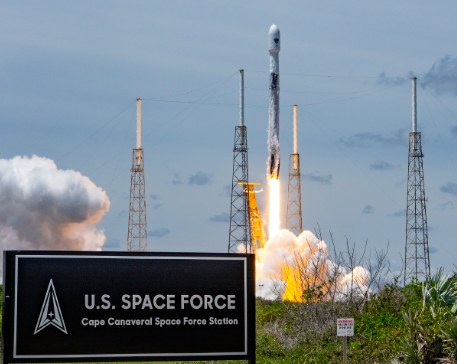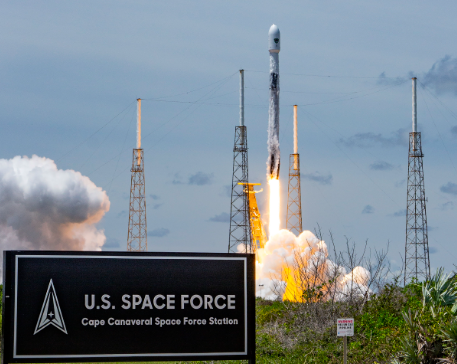By David Hollenbach – Founder, President & CEO – DSoft Technology, Engineering & Analysis, Inc.
Introduction
Those familiar with air power theory know that well before World War II and soon after World War I, Italian Air Marshall Giulio Douhet advocated that the future of war could justify bombing civilian targets by declaring total war on an adversary, later coined “strategic bombardment”. Even at the dawn of military airpower in 1921, Douhet reasoned that war should be extended to civilian and industrial targets to terrorize the population and destroy re-supply thereby hastening the enemy’s surrender. Douhet’s thesis was about adapting to the change in the character of war, and to win by destroying the enemy’s will to win, not considered humane or gentlemanly in previous centuries. His theories influenced the United States’ strategic bombing campaigns of World War II in Dresden and Hamburg where industry, political infrastructure and civilian populations were targeted.
“Victory smiles upon those who anticipate the change in the character of war, not upon those who wait to adapt themselves after the changes occur.”
Giulio Douhet, The Command of the Air, 1921
The nature of warfare continually evolves over time. Examples include trench warfare, guerilla, limited, Blitzkrieg, and mutual assured destruction strategies. Just as strategic bombing changed the character of war in World War II, we are at a turning point in space where space has now become a warfighting domain unto itself, and the US is adapting to an evolving space threat environment. General James H. Dickinson, now Commander of US Space Command recently stated, “Space is now a military operational domain, thereby warranting a national security responsibility to protect US and allied interests.”
Background
There is little argument that space is now a warfighting domain that is becoming increasingly crowded and contested by near peers as well as adversaries who have identified and analyzed the Achilles’ heels of the US space infrastructure. Key to winning in space warfare and information dominance is the ability to outmaneuver our adversaries in both 1) the space area of responsibility, and 2) in space’s support to the joint force. One of our Achille’s heels is the ability to reconstitute space-based capabilities quickly. Joint Publication 3-14, Space Operations, defines reconstitution as, “…[consisting] of actions taken to restore functionality to an acceptable level for a particular mission, operation, or contingency after severe degradation. It includes launching additional satellites or bringing additional ground stations, new signals, and spectrum into play to bolster the ability to provide the capabilities and capacity required for mission success.” Unfortunately, responsive spacelift, the ability to rapidly reconstitute a constellation, has been a difficult problem to solve, despite 40+ years of studies, investments and debate.
The OODA Loop
The OODA Loop: Observe, Orient, Decide, Act concept provides a model that is informed and advanced by space-based assets. The side that can go through successful, consecutive OODA loops faster than their opponent will likely win the conflict. To win in space and terrestrially, the US must operate at a faster tempo than our adversaries, or better yet, get inside an adversary’s OODA loop.

Most of us are familiar with OODA. US Air Force Colonel John Boyd developed the concept as a model to understand decision-making processes during competition, including war. The goal is to “get inside” the opponent’s decision cycle and gain the advantage. Boyd postulated that, “… all decisions are based on observations of the evolving situation tempered with implicit filtering of the problem being addressed.” He went on to state, “In order to win, we should operate at a faster tempo or rhythm than our adversaries—or, better yet, get inside [the] adversary’s Observation-Orientation-Decision-Action time cycle or loop … Such activity will make us appear ambiguous (unpredictable) thereby generate confusion and disorder among our adversaries—since our adversaries will be unable to generate mental images or pictures that agree with the menacing, as well as faster transient rhythm or patterns, they are competing against.”
OODA can probably best be explained with a sports analogy. In a football game, offenses and defenses attempt to outsmart each other by matching personnel, plays and formations. A defense’s alignment is called to attempt to match what it believes the offense is going to do. Watch the quarterback stomp his foot at the line of scrimmage to put his receiver in motion. Followed by a long count, the quarterback observes a defensive back either follow the receiver down the line, the defense shift, or stand fast. Based on that observation, in seconds the quarterback determines if the defense is set up for a zone or man-to-man play. Depending on that assessment, he may change the play at the line of scrimmage to take advantage of the defense’s alignment. In this example, the defense ignores the receiver in motion telling the quarterback that he is facing a zone defense and can drop off a short pass to a running back in the soft defense. The receiver in motion just becomes a decoy.
The team that can make the adjustments – move through their own OODA loops – faster than the opposition has a tactical advantage which can allow even physically, out-numbered or technically inferior teams a chance to win.
Speed of Need
Today, most of our space-related processes are manpower intensive and slow and would benefit from new strategies and automation to minimize response time, and to free up human decision resources to maximize new OODA cycles. Therefore, a new strategy and mindset should be contemplated to be more proactive in augmenting and replenishing (launching and orbiting) our vulnerable on-orbit space assets to minimize breaks in space support to the joint force. To win in space, we need to move faster, deliberately plan and execute in terms of OODA.
Spacelift is defined by Joint Publication 3-14, Space Operations, as “…the ability to deliver payloads (satellites or other materials) into space.” Assured access to space includes spacelift operations and range operations. Currently, Space Systems Command, the acquisition command located in Los Angeles, CA conducts spacelift operations. Prior to that, Air Force Space Command, as the operational command, owned that responsibility starting in 1990.
As we learned from extensive study and analysis in the Space Transportation Architecture Study and Advanced Launch System (ALS) days (1986-1991) and after the Space Shuttle Challenger disaster, the launch vehicle, payload interface, infrastructure, launch operations, and even personnel need modernization to provide a more resilient and responsive capability. Faster on-orbit reconstitution is the ability to respond to launch failures, failures on orbit (due to adversary action, cascading on-orbit collisions, wear-out, and/or random failures) and increased earth (or orbital) coverage requirements that may require the critical or time-dependent placement of new satellites into orbit.
A more responsive launch capability is essential to effective space operations to provide combat space support to war fighters. Today’s Launch on Schedule (LOS) strategy, typically planned years in advance, is insufficient to support the nation’s warfighting requirements which demand faster reconstitution. Until the joint planning process changes, launch procurement changes, and the supporting infrastructure modernized to accommodate the demands of proactive on-orbit reconstitution, we run the risk of being outside OODA as our near peers and even lower technically capable adversaries exploit our vulnerable on-orbit systems without the ability to quickly replenish the satellite.
Historical Perspective
Despite years of Launch on Demand (LOD) study and initiatives, AFSPC was unable to advance the state-of-the-art launch systems and operations. Political wrangling with NASA and SMC, constrained acquisition contracts and fiscal constraints, lack of vision, bureaucratic resistance, and understanding of the evolving joint warfighting force need, stalled US launch improvement programs. Stuck with an aging infrastructure on the Eastern and Western Ranges, AFSPC and the Pentagon opted for evolving existing launch systems with the Evolved Expendable Launch Vehicle (EELV) program designed to provide more affordable and efficient space launch services for national security and commercial space. EELV’s focus was/is on reliability, standardization of infrastructure, launch pads and payload interfaces. However, little was done to improve throughput and speed for an AFSPC LOD scenario. AFSPC even cancelled a contract and efforts to capture, study launch processing data to incrementally inform and improve launch operations. This data may have provided insight to improving the reconstitution planning system. For instance, analysis would have probably shown that a USSF warm storage facility at the Cape and Vandenberg to store payloads and launch vehicles for quick turn launches would decrease overall processing time. Such a capability, like the prepositioning of military supplies for wartime use, is necessary to rapidly call up a launch.
With the space mission being transferred to USSTRATCOM in 2003, USSTRATCOM adopted by default, a “Fight Tonight” mentality. Fight Tonight means executing the current OPLAN — fighting with what you have now and not what you wish to have tomorrow or have in the acquisition pipeline. As late as 2020, Joint Publication 3-14, Space Operations, indicated the approach to on-orbit reconstitution was and is still to capitulate to the reality of the LOS limitation: “Design intricacies and constrained launch schedules result in long lead times to replenish or replace spacecraft if lost, destroyed, or inoperable. Planners should recognize this and incorporate it into branch plans accordingly, recognizing that resources may be unavailable for the duration of a specific operation or campaign. Planners should identify critical nodes and alternate capabilities to allow for mitigation of a loss of capability.”
Future Operability and Resiliency Considerations
To operate on a high operations tempo, we need to have LOD-capable satellites ready to go within a few days of decision. The ability to prepare and keep a satellite in a suitable state of readiness requires payload processing facility flexibility and excess capacity (above LOS requirements). Like the ICBM force, LOD-capable satellites will need to be received, inspected, tested, processed, encapsulated, and potentially loaded with propellants and then kept in that state of near launch readiness within a facility that provides clean, environmentally controlled, secure storage.
A lead technical member of the ALS team, Harry Bernstein et al summarized in 1988, “If a space transportation architecture is to have good operability (resiliency, availability) characteristics, then it must consist of a mixed fleet of independent launch systems. (An independent launch system is one which would not be caused to standdown due to a failure in another.) Never again can the Nation opt for a one-vehicle architecture, or one in which the vast preponderance of the traffic is assigned to one vehicle system [italics added]. In such situations the frequency and consequences of failures (and failures will occur) would be intolerable, namely, too often an inability to launch, payload backlog buildups, and additional costs imposed on many programs because of the standdowns. Rather, the number of independent systems in the mixed fleet must be determined, and the architecture operated, such that each system is not used excessively in relation to its demonstrated or conservatively projected reliability and standdown times. Furthermore, each system used for cargo transport must have substantial surge capability.

Today’s peacetime and wartime requirements point to needing both a LOS and LOD capability. As Bernstein surmises, the systems could be very separate from one another so as not to assume a risk of a failure with either system grounding the other. Knowing this, new attention from the joint requirements community should be placed on building in extra facilities capacity to accommodate a LOD capability. Modular designs promise to enable launches to be called up on short notice and smallsats offer significant promise for faster processing, flexibility and the ability to be launched from air launched platforms from anywhere, any time. Standard vehicle-cargo operations will also add repeatability and predictable processes. Reduced on-orbit test and checkout time would reduce time as well. A LOD system with high operability and a mobile launch platform would seem to satisfy the requirement.
Summary
Rapid space force reconstitution provides responsive and flexible space support to the joint force. The side that can move faster than the opposition has a tactical advantage which can allow even physically or technically inferior teams a chance to win. “France had 3,000 tanks and Germany had 2,400 in 1940. But the Germans structured their military to support Blitzkrieg. France was blinded to this revolution in warfare and was decisively defeated because of it.”
Rapid force reconstitution is an urgent national priority. As Major Jeffrey Caton’s groundbreaking research in 1994 summarized, “A LOD strategy deserves serious and urgent consideration and advocacy by joint war planners to ensure that the future joint force has critical space-based support when and where they need it.” That same urgency should be extended to cover on-orbit reconstitution. Rapidly reconstituting is one strategy to enable space operations to evolve to the changes in the character of war in the space domain.
About The Author

David has 25 years of business ownership and management and has 35 years of systems engineering, modeling and simulation, programmatic, staff and executive-level experience in military, commercial, and civil space fields including spacelift, manned spaceflight, space operations, and space surveillance, specializing in joint operations. David is a disabled military veteran.
Submit your article to SFA Magazine!
The SFA Magazine, a publication of the Space Force Association (SFA), focuses on educating the public about the United States Space Force (USSF), its Guardians and their family members, ensuring that military and civilian leaders have the knowledge needed for critical decision-making, while providing information on programs and policies that affect military and industry leaders. Submit an article for consideration.














